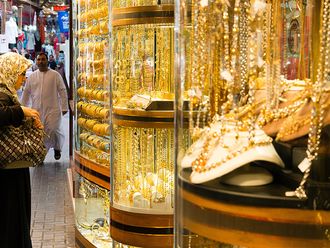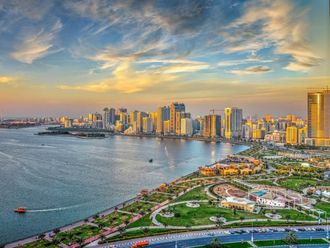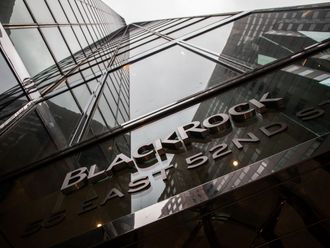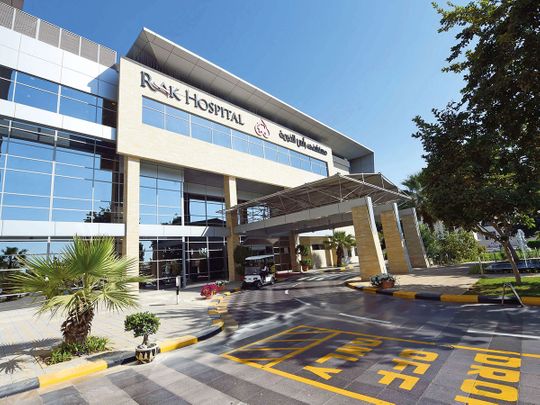
Dubai: Investors wanting to build another 100-bed or more hospital in the UAE had better take a deep breath before committing those funds. If not, they are likely to be inflicting needless pain on themselves.
Healthcare industry sources suggest that there is already enough capacity created in Dubai and Abu Dhabi, especially in the primary and secondary healthcare space. And even those capacities are being under-utilised at the moment.

It’s time that investors take a pause before putting in more funds to build more hospitals. They need to focus on niche health services
“Sure, there are clinics and hospitals that see 1,000 out-patients a day — but the serious concern is with the inpatient area,” said Raza Siddiqui, CEO of Arabian Healthcare Group and Executive Director at RAK Hospital. “It’s time that investors take a pause before putting in more funds to build more hospitals. They need to focus on niche health services rather than more of the me-too kind of primary and secondary facilities.”
But Helmut M. Schuehsler, Chairman and CEO of TVM Capital Healthcare, says even niche categories are getting crowded. “However, there are opportunities in specialist sectors, [with] consolidation of smaller providers into much larger and critical mass entities being one of them.
“There is a strong need for primary care that enables patients to be channelled into pathways of care that are right for them and costs in the system to be better managed. We believe secondary care institutions are probably covering demand at this point of time.
“Quantity is not the issue — providers need to focus on quality, performance and the measurement of performance.”
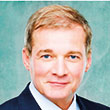
There are opportunities in specialist sectors, [with] consolidation of smaller providers into much larger and critical mass entities.
According to Alpen Capital, the number of hospital beds in the UAE could rise to around 15,000 by 2022. There were 12,540 hospital beds as of end 2016, according to official data.
“The overall healthcare market is expected to grow due to various drivers, including a growing population, prevalence of NCDs (non-communicable disease) among residents, the roll-out of mandatory health insurance, and others,” said Krishna Dhanak, Executive Director of Alpen Capital.
“The UAE government is also encouraging the PPP (public-private partnership) model to meet their rising medical needs while reducing the burden of financing. These factors are luring private health care companies to the UAE market.”
Indeed, compulsory health insurance in Dubai and Abu Dhabi was the trigger that pulled in significant private sector investments in the last five years. And most of the decisions were taken just before Gulf economies felt the full pressure of a slide in oil prices from mid-2014 onwards. The cost of raising funds has increased in the last two years, straining hospital operators’ cash flow and margins.
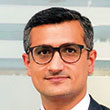
The UAE government is also encouraging the PPP model to meet rising medical needs while reducing the burden of financing.
“I reckon that investors were coming into healthcare from left, right and centre,” said Siddiqui. “Some without even a proper feasibility study — the belief was that universal health insurance and a growing population were enough to get them the growth.
“But 60 per cent of the local population are in the 15-44 year category and they are less likely to be heading to the hospital. That’s one reason creating lower bed utilisation by inpatients.”
Full medical coverage hasn’t gone the way it was expected to. Sure, there was a spike in hospital visits in 2016 and 2017 when more sections of Dubai’s resident base were added to the compulsory insurance scheme.
But 2018 provided a wake-up call for hospitals and clinics — by then, residents were finding that full coverage need not mean they could visit a facility and pay next to nothing for treatment. More policies were being issued where the co-payment — the amount the insured has to pay — could range from 5 per cent to 20. When it is in the region of 20 per cent, the costs can prove quite steep for the insured.
Some insurance companies have not been helpful either. “If it costs $15,000 for an expat to do cardiac surgery in the UAE and around $8,000 in India or Sri Lanka, then the insurance firm will want it done in the expat’s home country,” said a senior official at a local hospital.
According to Siddiqui, there are solutions to help UAE’s healthcare sector, but it will require everyone in the industry to follow a certain script. “Forget about competition … think collaboration,” he said. “If there are going to be more than 20 facilities offering cardiac surgery, there’s no way anyone will be able to reach critical mass in the number of operations done.
“It’s not the capital expenditure (capex) that’s such a pain for hospitals, it’s operating expenditure (opex). Whatever be the state of the market, doctors don’t come cheap.”
To get things going its way, healthcare sector needs to get more medical tourists into the country. “By that I mean not people coming in for cosmetic surgery alone,” said Siddiqui. “There are thousands of passengers transiting through Dubai every day to seek treatment elsewhere. What we should be working on is working on ways to get a good number of them seek treatment in the UAE. It’s doable … Germany and Singapore have shown the way. It can be repeated in the UAE.”
A prescription for UAE’s healthcare sector
* Get more medical tourists to come calling: Dubai hosted 326,649 medical tourists in 2016, an increase of 9.5 per cent year-on-year and aims to receive 500,000 tourists by 2020 by relaxing visa procedures and holding promotions, according to Alpen Capital’s Krishna Dhanak. “Abu Dhabi is establishing a medical tourism network to attract patients, mainly from Russia, China and India.”
* Invest in niche healthcare: There is a shortage of healthcare formats such as long-term and post-acute care rehabilitation (LTPAC), specialised clinics, and home healthcare providers.
* Go for super-specialisation: “Existing specialised centres are witnessing high patient volumes and includes Burjeel Hospital for Advanced Surgery, Wooridul Spine Centre, Cleveland Clinic and Diabetes Centre of Imperial College of London,” said Dhanak. “Upcoming projects include expansion of Al Ain Hospital and Rashid Hospital.”
* Combine resources where possible: “While an increase in number of facilities represents growth, consolidation of business and increasing market share also construes growth,” said Dhanak. “The industry is witnessing a spurt in mergers and acquisitions.”








